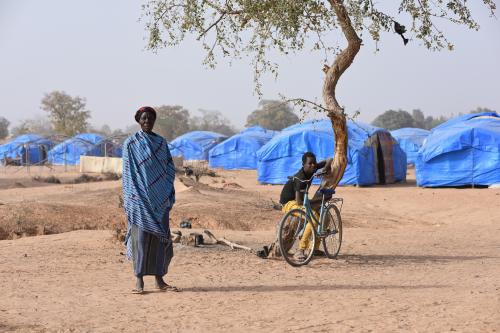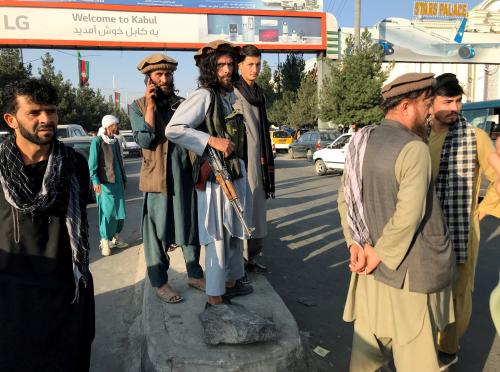While Iraq is much in the news these days, there are important gaps in coverage by the mainstream press. Media explanations of the current crisis tend to simplistically focus on the struggle between Iraqi/Kurdish forces and Islamic State of Iraq and the Levant (ISIL) militants. And yet there is a much more complex reality of ethnic and political conflict in Iraq, including a strong sense of grievance of the Sunni Arab community, which is likely to have major humanitarian consequences, regardless of what happens in the fight with ISIL. People are not only fleeing their homes in Iraq because of atrocities committed by ISIL. They are also fleeing atrocities committed by a plethora of other armed groups, such as Shia militia groups as well as bombings by pro-government forces.
We don’t hear much about the humanitarian fallout from the current crisis in Iraq, but Iraq now has one of the highest populations of internally displaced people (IDPs) in the world. Since the latest crisis started in January 2014, 2.6 million people have been displaced— a figure that is in addition to the over 1 million still displaced from the 2006- 2008 period of sectarian conflict. Iraq is also hosting a quarter of a million Syrian refugees. It is time not only to pay attention to the humanitarian crisis in Iraq but also to address the disparities in present humanitarian operations.
The first disparity is that of funding for humanitarian operations in Iraq. Last year, when the crisis began, Saudi Arabia gave $500 million to the UN to assist the IDPs, but that money ran out in March 2015 forcing agencies to cut programs The UN’s revised Iraq Strategic Response Plan appeals for $2.2 billion for 2014-15. So far only 5 percent has been received. In comparison, the UN’s $8 billion appeal for Syria is now 15 percent funded. While both crises need further funding, it appears that Iraq’s massive displacement crisis is being overshadowed by Syria. Like Syria, Iraq has been designated by the UN as a Level 3 emergency (the highest level), but this has not translated into urgently-needed funding. In fact, there is a risk that this could be the first level 3 crisis in the world to run out of money. .
A second disparity is between aid for refugees and for IDPs. When Syrian refugees started arriving in the Kurdish region of Iraq three years ago, there was more attention to their needs than is now being paid to the needs of a far larger number of Iraqi IDPs. As one of us directly observed in Northern Iraq, Syrian refugee camps in Iraq are some of the better refugee camps in the world; IDP camps in Iraq (some of which are only a few minutes’ drive from a refugee camp) are among the worst. While it’s true that the refugee camps have been there longer and that the refugees have invested some of their own resources to improve their camps, there has still been far more attention paid to the refugees than to the IDPs. This disparity of treatment between refugees and IDPs – particularly evident when they are living in proximity to one another—is a global phenomenon which is causing tension in Iraq. Humanitarian principles call for assistance solely on the basis of need – not on which ‘category’ a person falls in.
A third global disparity also evident in Iraq is the disproportionate attention given to those IDPs and refugees who live in camps in comparison with the larger numbers living on their own. Despite UNHCR’s July 2014 Alternatives to Camps policy, the less than 10 percent of IDPs, and 40 percent of refugees who live in camps get much more attention and organized assistance than the vast majority who live outside of camps. This is not only inequitable, but further serves to pressure the displaced populations to move to camps even though living conditions in many camps are inadequate, and there are restrictions to freedom of movement and access to livelihood opportunities. Moreover, the communities that host refugees and IDPs are usually given short shrift by humanitarian agencies and by donors. And yet these communities, often poor communities, are directly impacted by the arrival of large numbers of displaced people. Public services come under strain, rental costs increase, and wages decline. The hospitality of receiving communities is legendary but disparities in aid create tensions within communities and more community tensions are the last things Iraq needs. .
The humanitarian crisis in Iraq is likely to get much worse in 2015. For example, there are presently reports that if/when fighting starts in Mosul, up to 500,000 more people could flee. And it’s not clear where they will be able to go and whether they will receive the assistance they need. The situation is so dire that some Iraqis have crossed into Syria in search of security and assistance. It sounds unbelievable for anyone to go to Syria in search of safety, but that’s how bad things have become..
We need to pay more attention to the humanitarian crisis in Iraq. We need to make sure that humanitarian aid is given on the basis of need— whether those in need are refugees or IDPs and whether they live in camps or among the community. We need to ensure that humanitarian aid does not create tensions and resentments that could make things worse..


Commentary
The overlooked humanitarian crisis in Iraq: The need to address disparities
April 28, 2015